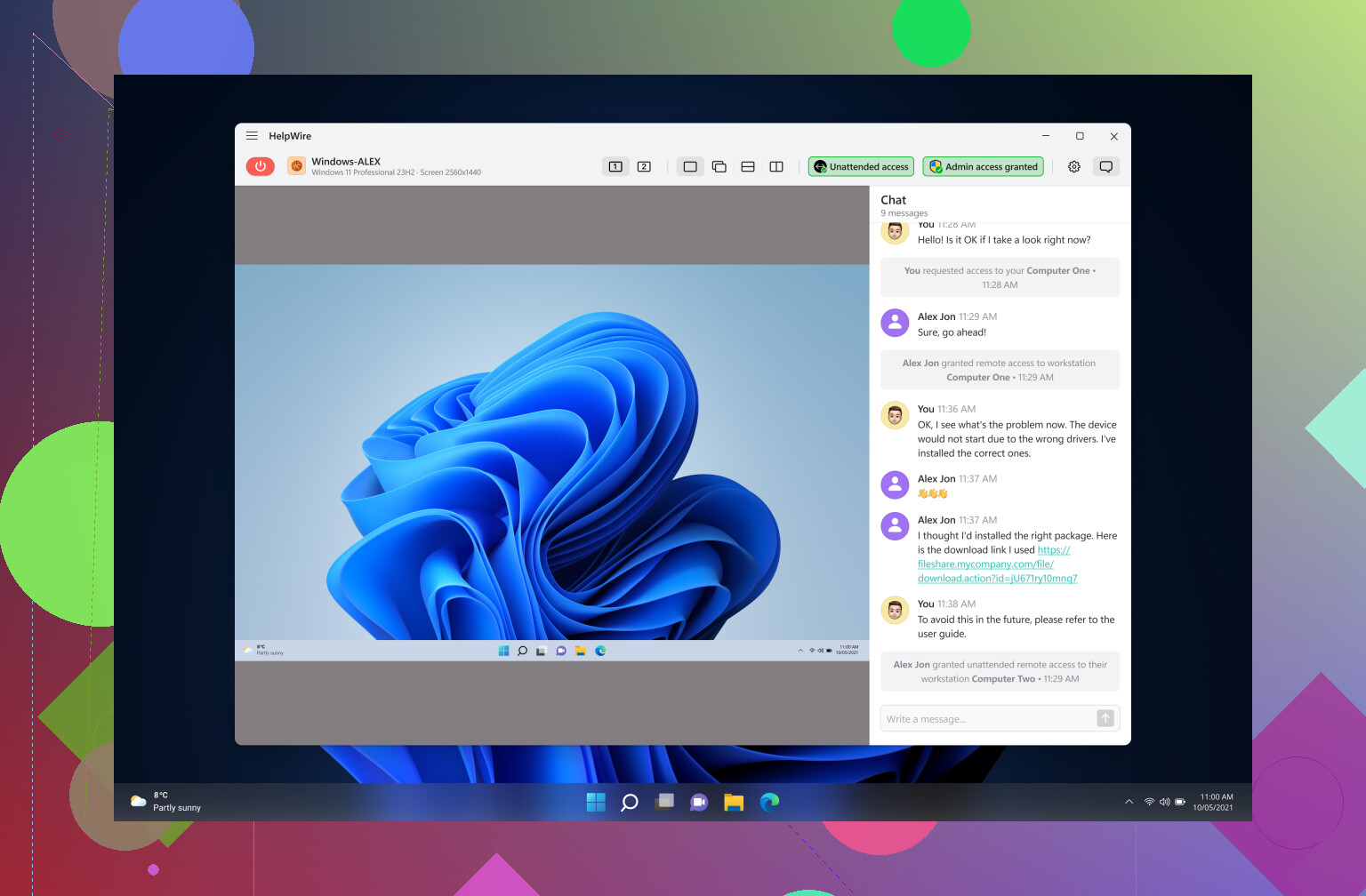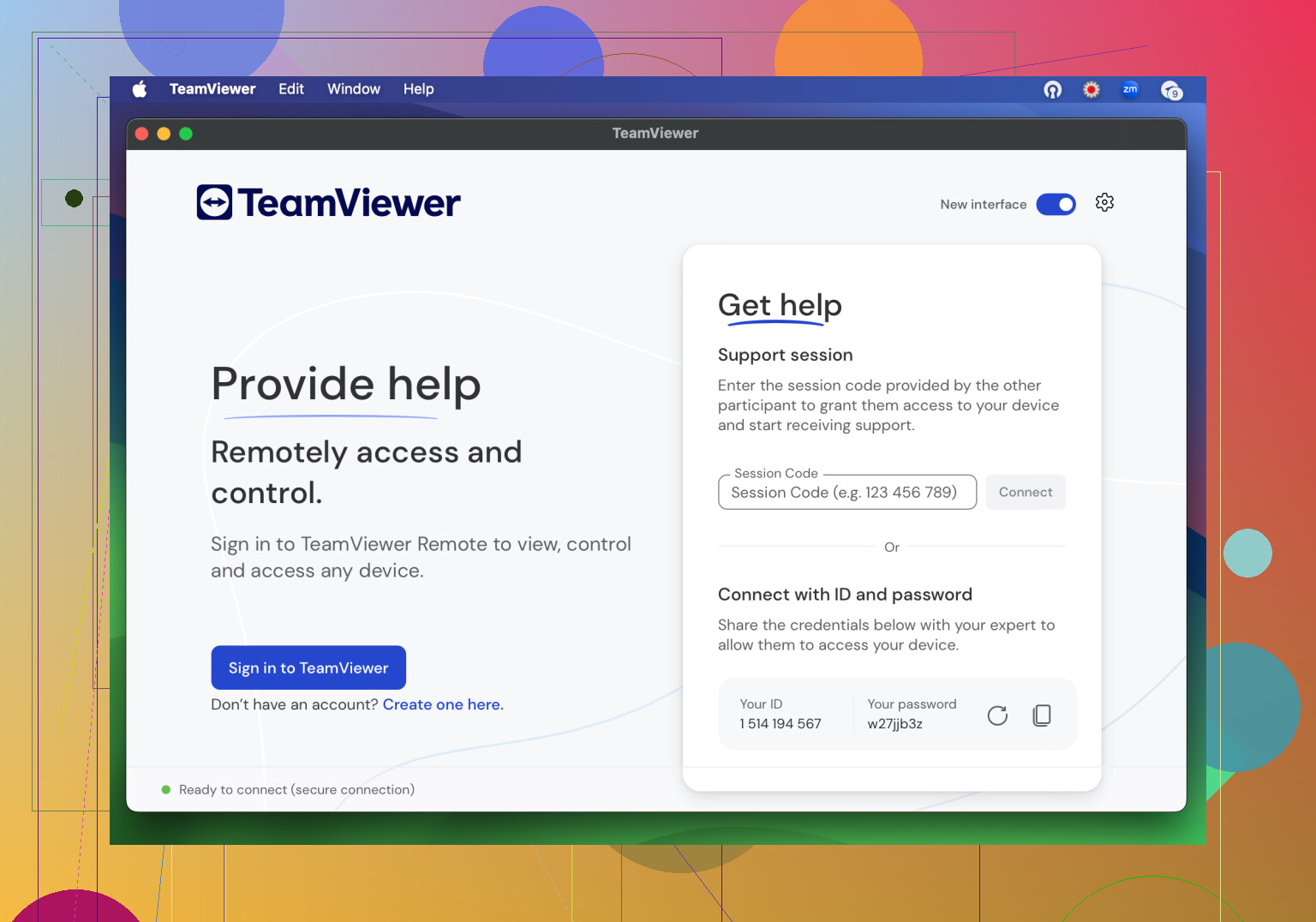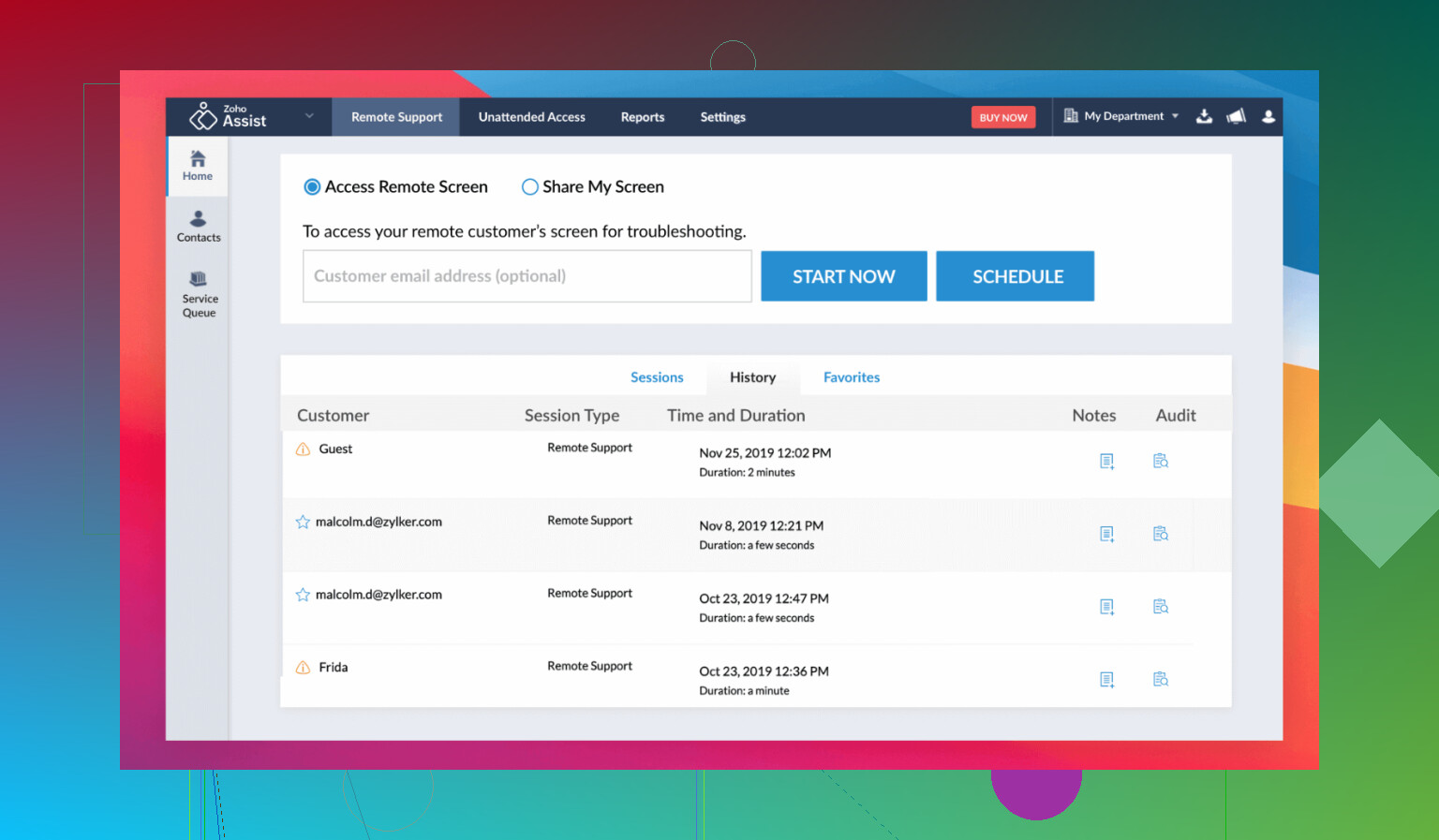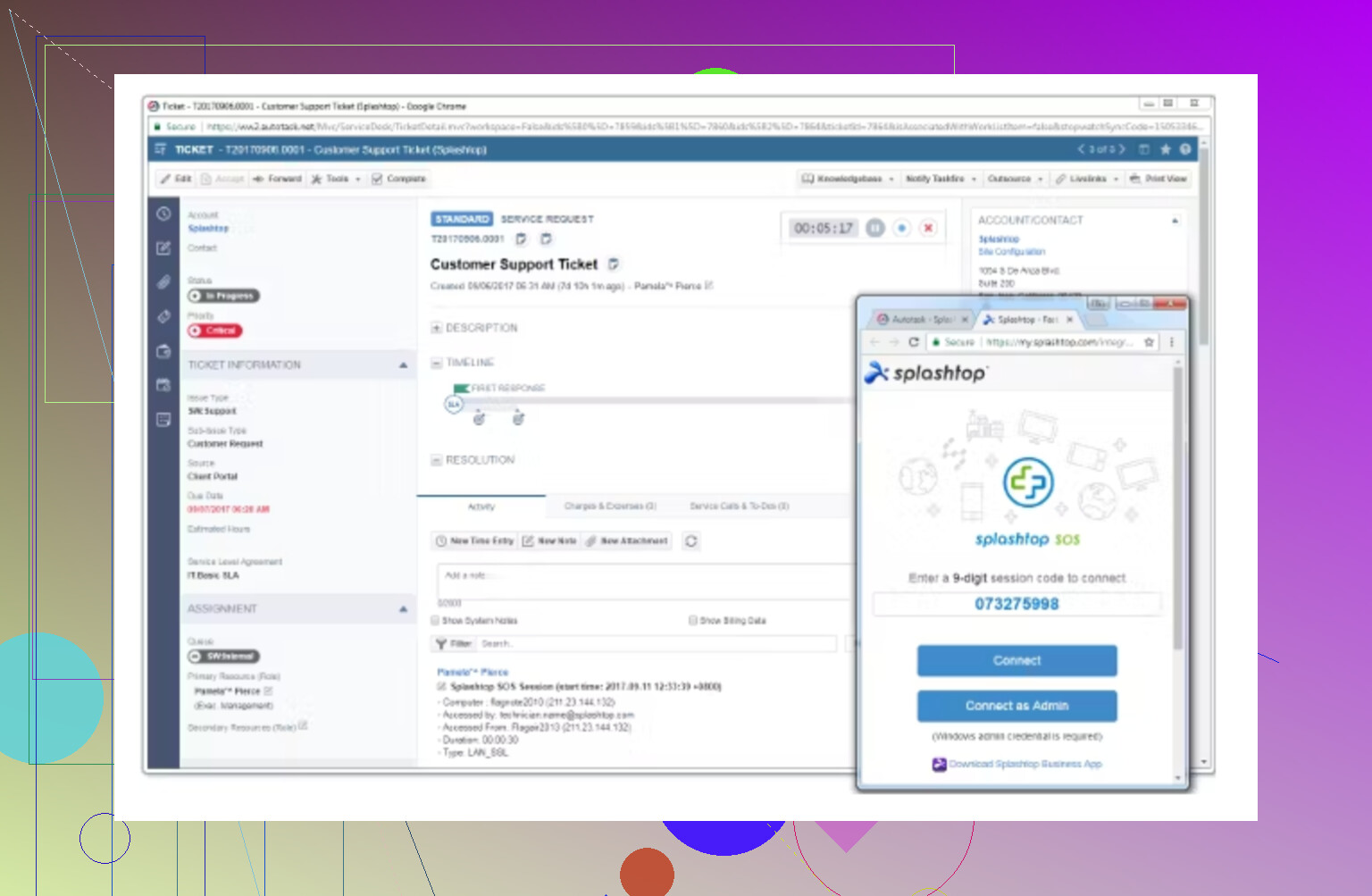Looking for recommendations on reliable remote desktop software for a small business. We need something that’s easy to set up and secure for a distributed team. There are a lot of options like TeamViewer, AnyDesk, and RemotePC, but it’s tough to figure out what’s worth the investment. What do you use, and what has your experience been? Any help would be great as we need to set this up soon.
Let’s get real about remote desktop tools for small businesses. I’ve tried a bunch, some for work, some because I’m that guy who loves fiddling with tech instead of binge-watching whatever’s popular. Here’s my totally unsponsored download of which ones are actually worth your time (and which ones are rage-inducing).
My Top Pick After Much Swearing: HelpWire
Just straight up, HelpWire checks most of my boxes without creating more headaches—rare in this space. It’s like that one friend who brings snacks and actually listens at the meeting: practical, not flashy, and genuinely makes things easier.
To break it down: their connections are quick enough even for an over-caffeinated Monday, and I didn’t have to google “what’s end-to-end encryption” because the security just works in the background. The interface is so logical my tech-averse buddy could use it—and she still thinks “RAM” is a sheep joke. Quick chat, drag-n-drop file sharing, and session recording are right there, no extra tabs or add-ons needed. Cost-wise, it won’t drain your coffee fund or require a six-month approval chain.
I’ve hit up support three times (don’t ask) and every answer came back smart and not robotic. If your “team” is the same three people doing ten jobs, it fits right into the workflow without getting in your way.
How the Other Guys Stack Up
TeamViewer
Now, if you’ve ever been on the internet, you’ve probably tripped over TeamViewer. It’s everywhere for a reason—lots of features, lots of users. But holy moly, the subscription levels! It’s like you’re buying airplane seats: this much for “basic,” this much for “can actually work.” Plus, prices seem to go up every time I check, and if you miss a renewal, there’s no parade of forgiveness. Occasionally, connections will judder or even bail on you, and the interface just feels like it’s made more for IT pros than us regular mortals.
Zoho Assist
If you’re all-in on helpdesk tickets and remote troubleshooting, Zoho Assist is solid, but it’s just not built for what my sort of team needs. We need to work together, not just rescue broken laptops remotely. It’s good for IT pros, but for daily collaboration? Meh. Also, some expected integrations just ain’t there yet.
Chrome Remote Desktop
On paper, Chrome Remote Desktop feels like a steal—it’s free, you just log in, and boom, you’re on another device. But once you try to do anything more than grab a forgotten doc, cracks appear. No native multi-monitor, can’t send files, and security is a “trust Google” situation. Awesome for quick fixes, but forget about using this in any sort of business-y way.
Splashtop
Had high hopes for Splashtop, honestly. It screams along, even handling video editing without a hiccup when latency matters. But then you look at the bill: charge per user, per device, and it piles up if your team grows just a little. Plus, while the barebones stuff is slick, it’s missing some deeper sharing and collaboration tools. Not a dealbreaker for everyone, but I always need “just one more feature.”
That’s my take. If someone found a tool that does mind-reading and doesn’t cost a fortune, let me know. Otherwise, HelpWire is the sleeper solution that actually works right out of the box for most regular small biz operations.
Let’s be honest: remote desktop tools are the kind of thing you don’t think about till your boss is halfway through a train tunnel and screaming about a missing spreadsheet on her office PC. As much as @mikeappsreviewer is in love with HelpWire (not saying it’s invalid—everyone’s got their flavor), I still don’t 100% get the hype. Sure, it’s clean, not super pricy, and goblin-proof in terms of security, but I’ve run into a couple of odd hiccups trying to do advanced role-based permissions for access control—if you gotta hand out granular rights, it gets clunky real quick. If barebones and frictionless is your jam (and your staff isn’t made up of permission-hungry power users), then HelpWire makes total sense.
For my money, though, I’d argue AnyDesk deserves a second look, despite being a little spartan-looking. Setup takes literal minutes, connections are crazy-fast, the mobile apps are genuinely usable (unlike TeamViewer’s, which feels like a punishment), and they’ve quietly added a stack of security features—TLS 1.2, 2FA, device access whitelists, the works. Still, pricing can jump as your team grows, and their free tier keeps teasing features you gotta pony up for if you want anything more than intro-level support.
TeamViewer? It’s like the “Microsoft Office” of this world: everyone’s heard of it, it technically does everything, but you feel a little dirty every billing cycle. Zoho Assist’s fine if you like spending more time labeling tickets than solving the actual problem. Splashtop’s wicked if you care about getting workflow-level speed, but I couldn’t justify the costs for 5+ seats, so yeah.
Honestly, line up your needs: basic access & security → HelpWire. Power-user stuff & fast cross-device support → AnyDesk. One-woman IT department insanity? TeamViewer—just bring your wallet.
TL;DR: HelpWire and AnyDesk actually deliver for distributed teams. Skip the free stuff for serious work unless you love living dangerously. The remote desktop market’s still more about “least annoying” than “best ever.”
Wow, this thread is basically the Thunderdome of remote desktop opinions and I’m here for it. Both @mikeappsreviewer and @sognonotturno have decent takes—HelpWire and AnyDesk seem to be the fan favorites, for, you know, not giving you a migraine during setup or nuking your bank account. But am I the only one who feels like “easy setup” gets thrown around a lot and half the tools still make you chase down activation emails like you’re on a treasure hunt? Also: security! I saw someone mention “just trust Google” for Chrome Remote Desktop and wheeew, hard pass for anything more sensitive than checking grandma’s computer.
Let’s get brutally honest: HelpWire is honestly the only one I haven’t rage-uninstalled during a team call, so that’s saying something. It’s not “do everything with one button” simple, but my ten-minute attention span didn’t cost me any crucial data or dignity during setup. Security there actually feels like a feature, not a cryptic afterthought (ya listening, TeamViewer?). Sure, granular permissions are a bit of a snooze if you want IT-level power, but for an actual small business—where Todd from accounting still hasn’t figured out his printer—I’ll take “works out of the box” over “1000 settings you’ll never understand” any day.
AnyDesk, though—let’s not kid ourselves, it’s the Toyota Camry here. Reliable, not fancy, and you’ll probably outgrow its skin before it fails you. But free stuff? Use that for fixing family computers, not core business ops unless you wanna roll the dice.
In conclusion—if you value surviving the day with sanity and budget intact, HelpWire is pretty SEO-friendly for “remote desktop for small business.” Boring, maybe, but sometimes vanilla is exactly what you want when your laptop is on fire and your tech guy’s stuck in a Zoom meeting.
Let’s crowdsource some honesty: Between TeamViewer’s relentless upsell and Chrome Remote Desktop’s “free but flimsy” approach, most of us small biz folks end up running in circles trying to get software that’s both secure and not a pain for our least tech-inclined coworkers. I’ll come right out and say that HelpWire, as multiple posts above have hinted (and a couple outright raved about), is pretty close to the “plug it in and go” solution for the distributed-small-team universe.
What’s working for people (myself included):
— Install is stupidly simple. If you’ve ever had to spend half an afternoon guiding someone over the phone just to launch a remote app, you’ll appreciate this.
— Security doesn’t nag you with a million dialogs but still feels robust (think automatic encryption; doesn’t require you to be your own IT security analyst).
— There’s built-in chat, dead-easy file transfer, and session recording baked right in, so you aren’t juggling six add-ons or digging through menus to find what should honestly be standard.
But—it ain’t perfect. Biggest nitpicks:
— If you want advanced, granular permissions or super-tight IT policy controls, you’ll probably feel boxed in. Some custom nerdy configurations found in pricier competitors aren’t here.
— Not the choice for heavy-duty enterprise-scale needs or if your office is running on half a dozen operating systems from the last century.
I get where the love for AnyDesk comes from—reliable, lots of people know it, and minimal drama—but HelpWire edges ahead for “set and forget” daily use, especially if your team is small and just needs things to work out of the box. TeamViewer is still reigning for larger shops that need advanced features (and have the budget). Chrome Remote Desktop? Great for helping your mom, not your business pipeline.
TL;DR: HelpWire is the sensible, really-not-fancy but-and-that’s-the-point remote desktop pick. It’s not winning points for flexibility if you want enterprise complexity, but for under-10 staff teams? It’s one of the few that just works and doesn’t haunt your bank statement or your support inbox.



